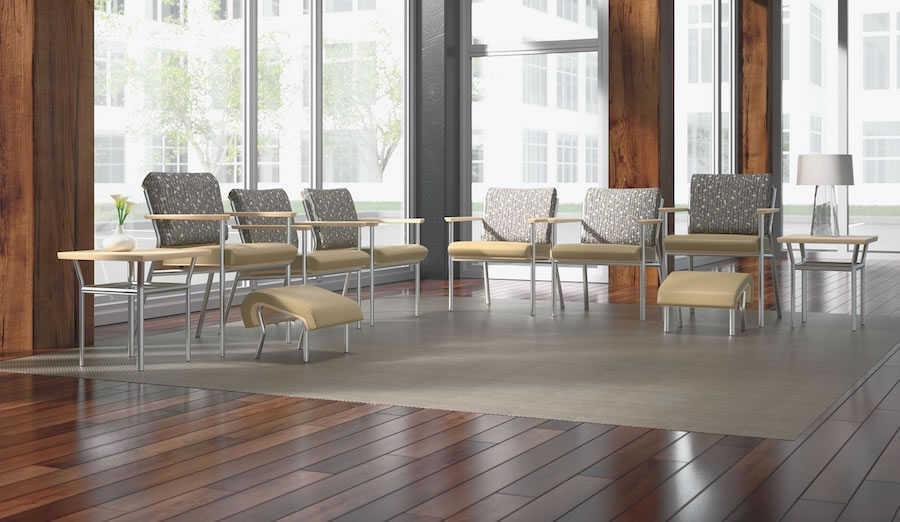One would assume that the standard rehabilitating hip chair found across hospitals and doctor’s offices would have already been updated to meet modern orthopedic post-op and rehab requirements, but before Wieland Healthcare’s innovative new Trace Hip chair was recently released, that unfortunately was not the case. The company closely consulted with 25 physical therapists and two athletic trainers to develop a chair tailored to recovering patients. We spoke with Chris Baden, product engineer, about the process, the feedback from patients and doctors alike, and how sustainable design plays into the product.
gb&d: Your research led you to learn that there have been technological changes in orthopedic surgery procedures. What were these changes, and how did they influence your design of this new hip chair?
Chris Baden: Patients are instructed to sit with their hips at least as high as knee level. Due to the incision going laterally through the hip, patients risked dislocation if their trunk-to-hip angle was less than 90 degrees. Recent advances have allowed many of our physicians to eliminate hip precautions following hip arthroplasty, as they are going in at the front of the hip in today’s procedures. The other issue is that patients with long legs but short torsos have a difficult time transitioning their body weight forward far enough to get up. The seat would need to be high enough to get their knees off the edge so that their knees are lower than their hips.

gb&d: Can you tell me a bit more about how standard hip chairs are different from the new Trace Collection?
 Baden: Standard hip chairs have always had a higher seat height. Most of these chairs are in the 25–26-inch height range. This hampers many patients’ ability to get in and out of the standard hip chair. The new Trace collection hip chair is 21.5 inches in height, which is 3 inches higher than our standard chair. This allows the patient to use the floor as a stable base for sitting down. No two people are the same. We all have different ways of getting comfortable in a chair, and one of them is leg placement. We did not want to limit the patient to a crossbar or foot rest that would only work for a select few.
Baden: Standard hip chairs have always had a higher seat height. Most of these chairs are in the 25–26-inch height range. This hampers many patients’ ability to get in and out of the standard hip chair. The new Trace collection hip chair is 21.5 inches in height, which is 3 inches higher than our standard chair. This allows the patient to use the floor as a stable base for sitting down. No two people are the same. We all have different ways of getting comfortable in a chair, and one of them is leg placement. We did not want to limit the patient to a crossbar or foot rest that would only work for a select few.
gb&d: I know sustainability is important to Wieland. How did you employ sustainable design in this particular collection and chair?
Baden: In addition to keeping up and complying with the latest environmental laws and regulations, we actively seek to conserve, recycle, and act with respect toward our environment. For instance, 100% of steel, foam, wood, plastic, and corrugated packaging used is recyclable; 90% of the fabrics we offer are environmentally conscious products; 70% of supplies come from within a 500 mile radius of northwest Ohio and northeast Indiana; and all furniture is designed to be easily renewed as part of our commitment to maximize the useful life of the product. Also, our GREENGUARD Certification ensures that a product has met some of the world’s most rigorous and comprehensive standards for low emissions of volatile organic compounds (VOCs) into indoor air.
gb&d: What has the response from doctors and patients been like so far?
Baden: The response has been great from both orthopedic professionals and patients. We feel like the Trace Hip chair changes the perspective of what a hip chair should look like, and we feel that we have done a great job at capturing that.

